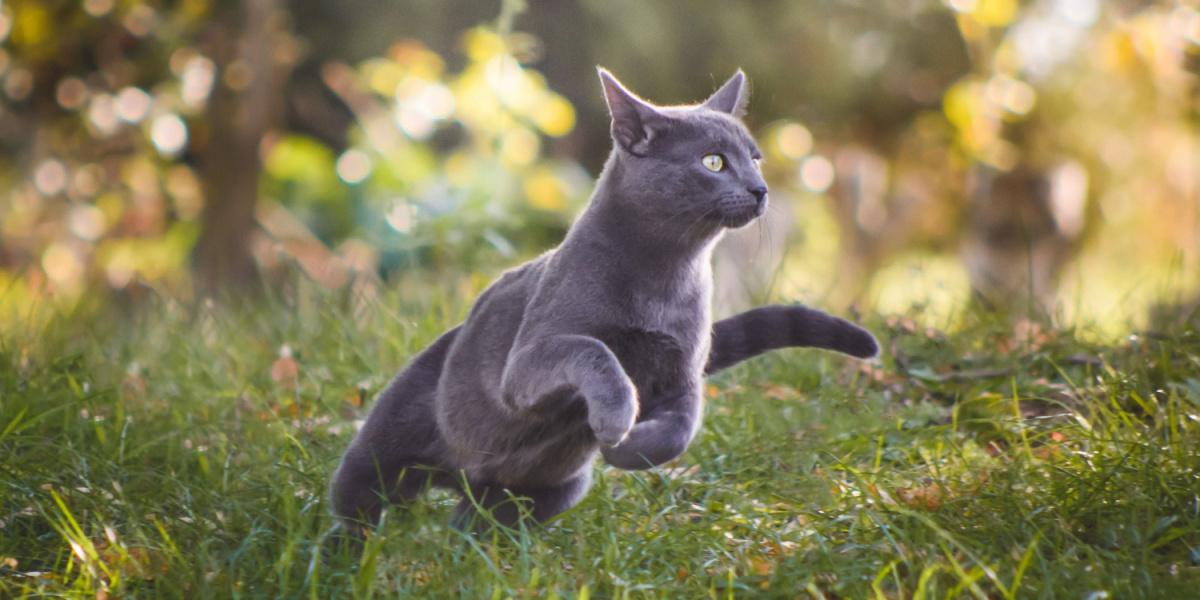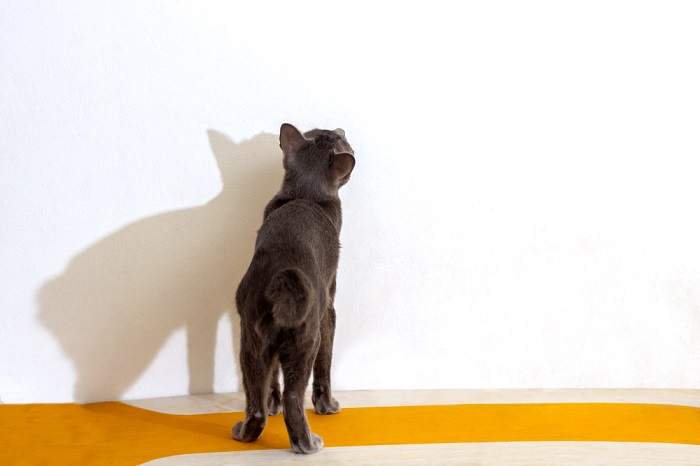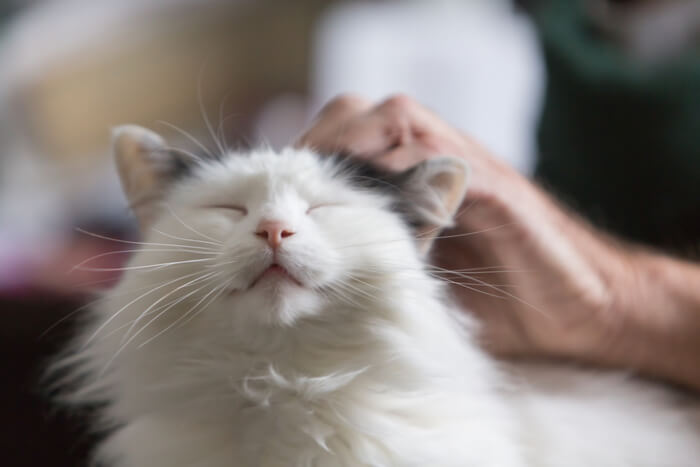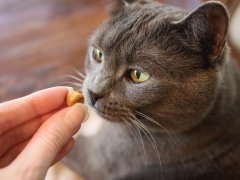
Cats, especially kittens, are known for their high energy levels, low attention spans, and impulsive behaviors. But can these behaviors go beyond normal and be classified as a hyperactive disorder?
ADHD is a neurodevelopmental disorder in people, and although it is not yet recognized in cats, they can display some of the common signs. Here are some things to look out for in your pet cat, and some advice on judging what is normal.
Attention deficit hyperactivity disorder, or ADHD, is not recognized in cats, but cats can display some of the common signs. Traits associated with ADHD include hyperactivity, impulsiveness, distractibility, mood swings, and poor social interaction. Behavioral changes can be a sign of illness, stress, or anxiety in cats, and so pet owners should seek veterinary advice if concerned.Key Takeaways
What Is ADHD?
Attention-deficit hyperactivity disorder (ADHD) is a recognized neurodevelopmental disorder in human children and adults. It is characterized by certain behavioral and social signs in people.
The symptoms of ADHD include forgetfulness, short attention span, impulsivity, high energy levels (hyperactivity), and difficulties with social interactions, according to the Centers for Disease Control and Prevention (CDC).
Can Cats Get ADHD?
Currently, attention deficit hyperactivity disorder is not a recognized condition in cats. There is no known scientific research to support a diagnosis of a hyperactive disorder in cats, but this doesn’t mean that it does not exist in cats. The symptoms of ADHD that are noted in people are also seen in cats of all ages, but can often be explained by normal cat behavior and communication rather than neurodevelopmental or mental health disorders.
The spectrum of normal behavior is wide, and what is normal for one cat may be abnormal for another. ADHD is not yet recognized in cats, but a form of this disorder might be present in certain cats. It is important to note that these traits must be seen for a long period of time before they would be classified as of concern.
It can also be difficult to differentiate abnormal behavior from medical causes of certain symptoms. Diseases such as hyperthyroidism, cognitive dysfunction, and feline hyperesthesia syndrome (FHS) can all mimic similar signs of an attention deficit disorder. If your cat is showing unusual, concerning, or changeable behavior, it is always recommended to seek advice from a veterinarian.
Signs To Recognize
Although ADHD is not a known condition in cats, knowing what is normal and what is abnormal in terms of cat behavior is essential for any cat owner.
1. Short Attention Span

Having a short attention span is relatively normal for cats.
Cats use play both as a social experience and also to practice essential life skills for hunting, such as chasing, and pouncing. Cats have been found to be most attracted to toys that move, and which are around the size of small rodents, a common prey.
They also show habituation,1 getting bored of toys after certain periods of time. It is therefore perfectly normal for cats to play with a toy for a short period and then abandon them.
2. Hyperactivity
Most cat owners are familiar with the concept of the zoomies, where their cat has a burst of sudden chaotic energy and charges around the house in a mad rush for a few minutes. This is common and perfectly normal, with the zoomies being thought to be a response to excess energy, part of a cat’s normal predatory drive, or a desire to play.
Also Read: How To Calm Down a Hyper Cat: 10 Tips To Try
These bursts of high energy are more commonly seen in kittens but can occur in adult cats. Young cats are exceedingly playful and exuberant, and often seem to have an awful lot of energy throughout both day and night.
If your cat’s behavior or energy levels have suddenly changed, however, this might be more of a cause for concern. Medical problems, such as feline hyperesthesia syndrome or an overactive thyroid can cause symptoms such as restlessness, irritability, skittish behavior, and an inability to settle or sleep soundly. Behavioral concerns such as stress and anxiety can also lead to changes in activity levels and sleeping patterns.
3. Impulsive Behavior and Mood Swings
Some cats appear to be more physically impulsive than others and exhibit almost reckless behavior, such as launching themselves off a high piece of furniture or dangling from a curtain rail. These cats might also display rapid mood swings, switching from affection to claws in seconds.
This can be concerning behavior to watch as a cat owner, and it is difficult to know how “normal” this is for cats. A study looking at the personality of pet cats lists “impulsivity” as one of the five main character traits,2 but this particular attribute had some negative associations. High scores in both neuroticism and impulsiveness were thought to indicate some degree of environmental stress, leading to erratic and nervous behavior.
Cats are sometimes thought to be displaying impulsive and unpredictable behaviors when actually their subtle communications are just being missed. Petting aggression, for example, is often described as coming out of the blue, but most cats will display subtle changes in body language such as twitching tail tips and flattened ears, and will only resort to aggression if these signs are disregarded.
Cats that are displaying unpredictable behavior and impulsive traits might benefit from a behavioral assessment. These can be traits of ADHD, but can also indicate underlying stress or anxiety in their home environment.
4. A Disregard for Schedules
Cats are usually creatures of habit, with set routines for eating, sleeping, grooming, and more. Neurodevelopmental disorders can lead to strange, unpredictable, and unusual patterns of sleeping and eating.
This can be difficult to spot in cats, as they often eat small meals frequently throughout the day, and can sleep for long periods of time. Some cats can become very picky about the food, such as a refusal to eat a new flavor of food, or if the position of the food bowls has changed.
Any change to feeding or sleeping behavior should be investigated, as can be a sign of some medical issues as well as behavioral disorders.
5. Hyperfocus

Staring at walls is a concerning symptom that should be investigated by a veterinarian.
People with ADHD are known for their ability to hyperfocus on something for a length of time, completely blocking out everything else around them and becoming unresponsive to other stimuli such as calling their name. Cats can display this behavior, such as when stalking prey, and it would not be considered unusual.
However, if your cat is becoming confused, unresponsive, or showing odd behavior such as staring at walls, seek veterinary advice. Older cats can get a form of dementia called feline cognitive dysfunction, which can have these symptoms.
6. Poor Social Interaction
Cats can live in social groups, but social structure is complicated in cats, and they often are quite solitary in nature. Having a cat that doesn’t bond with other cats is not particularly unusual, especially if the cats are unrelated.
Extraversion is another of the five feline character traits2 and varies a lot between cats. It is likely dependent on many factors including genetics, early development, and social experiences.
What To Do if You Think Your Cat Has ADHD
Cats that are hyperactive, easily distracted, impulsive, and unpredictable can pose some challenges to owners. Plenty of active play with exciting toys (try a feather toy or battery-operated toys) might help burn off excess energy. Consider access to the outdoors for more stimulation, and be relaxed about a feeding schedule.
Watch your cat carefully during petting and cuddles for subtle signs of discomfort, or let them come to you for affection on their own terms.
If you think your cat’s behavior has changed, is unusual, or is negatively impacting you or your pet, then seek advice from a vet. There are some medical causes for some of these symptoms that need to be ruled out, and some behavioral advice and environmental modification might be needed.
ADHD in Cats: Final Thoughts

It’s always worth having a conversation with your veterinarian any time your worried about your cat’s behavior.
ADHD is not a recognized condition in cats. Some traits of the disorder, such as hyperactivity, altered social interactions, and distractibility, are often seen in people but can be perfectly normal in felines. However, it cannot be ruled out as a disorder, and if you are concerned about your cat’s behavior then it is recommended to seek veterinary advice.
Also Read: Do Cats Have Feelings For Their Owners?
Frequently Asked Questions
How do I know if my cat has ADHD?
ADHD is not currently a recognized condition in cats. Some of the signs, such as high energy levels, distractibility, and impulsiveness, can be normal in cats. However, behavioral changes can indicate stress, anxiety, or a medical problem, so veterinary advice should be sought if concerned.
What do I do if my cat has ADHD?
ADHD is not currently a recognized condition in cats. If your cat is showing behavioral signs associated with ADHD, speak to a vet or behaviorist about how you can modify their environment to suit their needs, such as by adding in plenty of active play and adjusting feeding schedules.
Can animals get ADHD?
There is no current evidence that animals can have an attention deficit disorder such as ADHD. However, some animals can display similar signs, such as hyperactivity, impulsivity, and short attention spans.
-
Hall, S., Bradshaw, J. & Robinson, I. (2002). "Object play in adult domestic cats: the roles of habituation and disinhibition." Applied Animal Behaviour Science. https://doi.org/10.1016/S0168-1591(02)00153-3
-
Litchfield, C., Quinton, G., Tindle, H. & Roetman, P. (2017). "The Feline Five: An exploration of personality in pet cats (Felis catus)." Plos One. 10.1371/journal.pone.0183455







